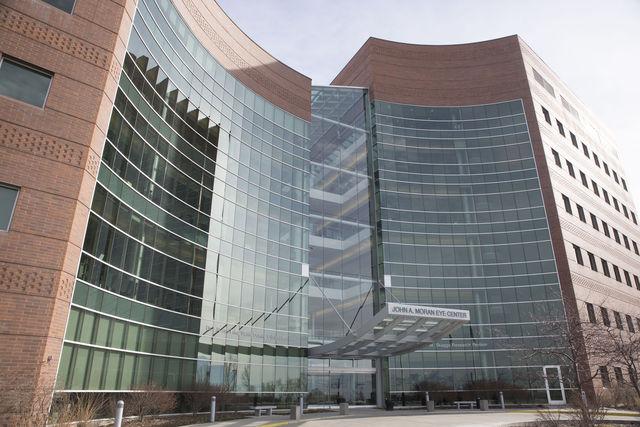The group Research to Prevent Blindness awarded a $115,000 grant to the U’s John A. Moran Eye Center.
Randall J. Olson, CEO of the center, will direct the funding and the research it will go toward, which could include a broad range of blinding diseases.
“It’s great that we’ve gotten this recognition by Research to Prevent Blindness,” Olson said. “We’re well known in the country as being really one of the best of the best.”
Research to Prevent Blindness, a philanthropic organization dedicated to preventing, treating and curing diseases that lead to blindness, is an established partner of the U, having donated a total of $5,665,300 to the university since 1986.
One of the possible areas for the research is macular degeneration, what Olson calls “the biggest disease in ophthalmology.” The disease affects more than 10 million Americans and is the leading cause of blindness. It causes the retina to deteriorate and vision to go dark. It’s considered incurable, but Olson and researchers at the center are aiming to change that.
“In macular degeneration we have several potential treatments and are looking for a pharmaceutical partner because this is really a huge area,” Olson said. “It’s extremely expensive once you’re getting into clinical trials — it could cost tens of millions of dollars.”
Olson said the center has three potential partners and hopes to finalize negotiations soon. The center is also pursuing an effort in coordination with the U’s Department of Chemistry — particularly organic chemistry — to treat glaucoma, as well as enhancing its efforts in cataract surgery (where it is already an industry leader).
Matthew Levine, spokesperson for Research to Prevent Blindness, said the grant to the center is pretty open-ended as far as application goes.
“What’s unique about our grants is that they’re unrestricted in nature,” Levine said. “You can do any number of things, and it’s highly sought after.”
Most government grants require recipients to focus on a single project; if a researcher discovers there is a separate venue they want to pursue, they can’t use the money. Research to Prevent Blindness allows their grants to finance anything that will benefit the research, from equipment costs to secretarial services.
“You know, $115,000 in today’s world is not the hugest amount of money, but it’s still incredibly important to all these departments,” Levine said. “We’re designed to fill whatever the need is.”
Research to Prevent Blindness’s ability to finance comes from a large endowment from their founder, Jules Stein, in 1960. The organization functions as an unofficial partner to the National Eye Institute by bringing together and funding various research groups.
The Moran Eye Center is the largest eye care facility between California and Michigan. Olsen estimates they have 60 individual research grants and more than 100 ongoing clinical trials.
@mbatman72


